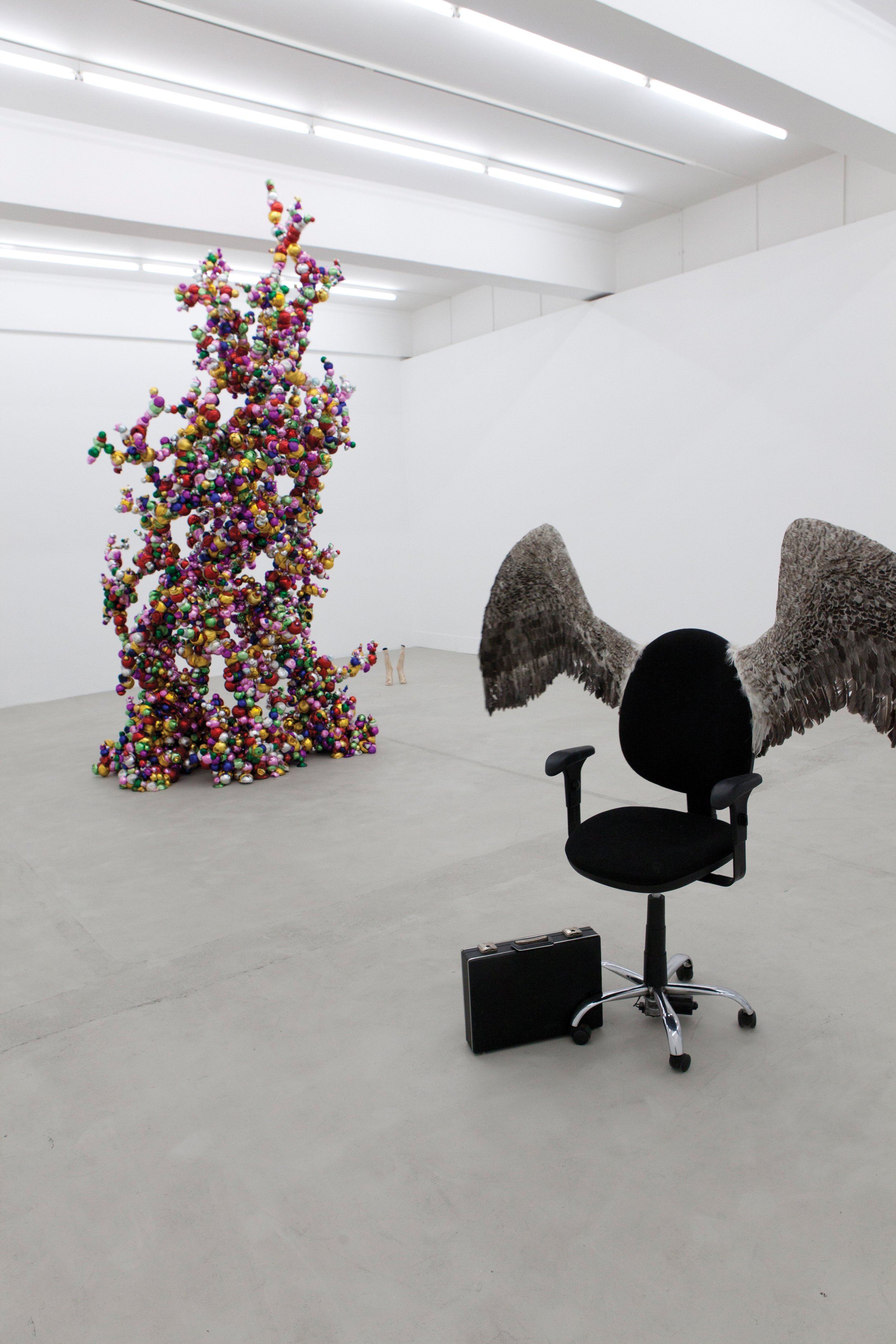
SCHLEICHER/LANGE BERLIN
KRISTOF KINTERA: DEMON OF THE GROWTH
12 September, 2012 - 20 October, 2012



-
Kristof Kintera’s sculptures convince in their congruence of form and content. In so doing, the work of the Prague-based artist is saturated with a subtle sense of humor, occasional moments of melancholy, and social issues. Depending on interest and perspective, these specific aspects of his work allow for new spaces of meaning while viewing the works.
The spectrum of Kintera’s practice includes large sculptures created using everyday objects, art in public space, and highly technical objects. Very di erent sources and things from everyday life can take on unusual sculptural form in his Prague laboratory. For example, bags of cement tower to form a seven-meter-high sculpture (“Do It Yourself: After Brancusi”, 2007), magical steam emerges from a golden oil barrel (“Holy Spirit Opened”, 2008), or an oversized street lantern lies like a large, sad monster in the gallery space (“Lay Down and Shine”, 2009). Multiple sources of inspiration and practices are inscribed in his work: an intuition when it comes to social issues, an interest in technology, and fascination with the childish gaze. Kintera’s sculptures all tell stories and are accessible to a wide audience. “I like sculptures which retain their original spontaneity. I think with a sculpture I enjoy its story the most.” The centerpiece of the exhibition “Demon of the Growth” at SCHLEICHER/LANGE is the large sculpture of the same title, consisting of 8000 plastic Christmas ornaments, that stretches toward the gallery ceiling like a Tatlin tower. This unique, voluminous sculpture created using hundreds of shiny Christmas baubles explores a quiet critique of consumerism. “It is a result of temptation of decadence. “I felt a strange need to work with the plastic kitschy molecules. But these are not the nice ones. I am using dirty plastic, and I like how it smells when you heat it up.”
On looking at this seductive structure, various questions emerge. To what extent does the Christmas ritual celebrated around the world with the ever-narrower cycles of consumption distract from social problems attributed to the individual? Or what role does the producer play on the market in light of the ever faster investment curves in which artworks are sold and consumed as purely aesthetic objects?